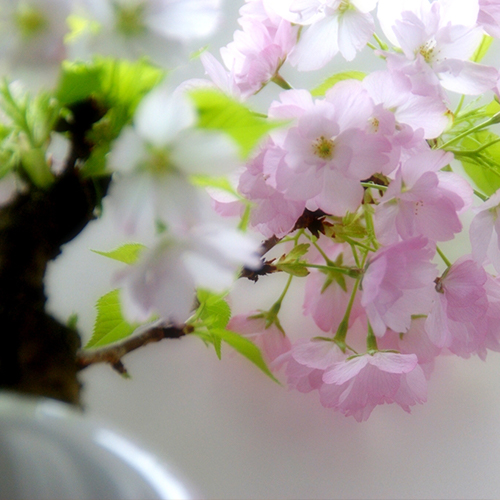「BONSAI」
Bonsai, which is believed to have been practiced in Japan since the Kamakura or Muromachi period, has been entertaining the Japanese for generations. Many types of trees are used in Bonsai, and depending on which type is used, there are shohaku bonsai, zouki bonsai, and mimono bonsai. There are no rules on which tree to use; you will grow the seedling and shape it into your style of art. Bonsai is attracting a lot of attention, and we hope you will enjoy what it can offer and the soothing and relaxing atmosphere it can create.
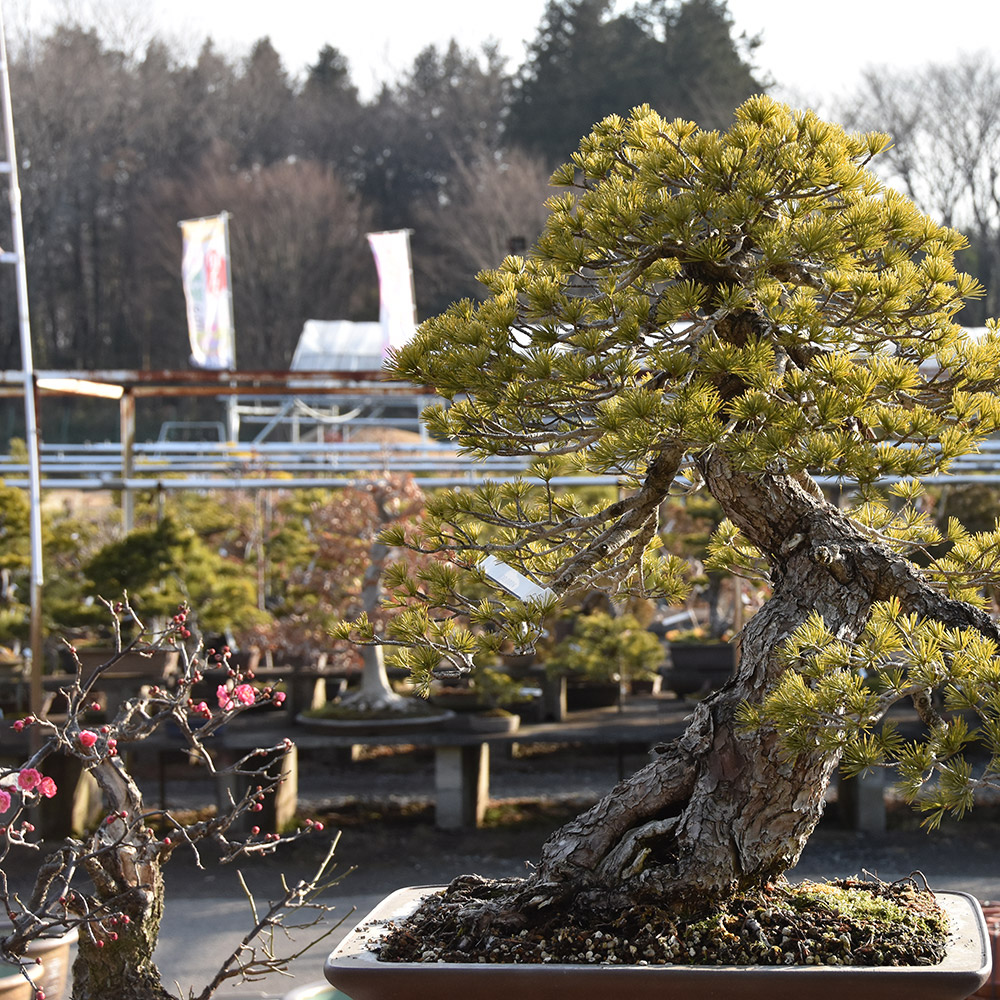
Bonsai originates in China. It was practiced as bonkei during the Tang dynasty and is said to have been imported to Japan during the Heian period. Bonsai has long been loved as a part of Japanese culture by many enthusiasts. Japanese bonsai is highly artistic, is well recognized globally, and is continuing to increase its international presence as BONSAI.

It is a common practice to grow a plant in a plant pot to appreciate it. A plant grown in a plant pot is called hachi-mono (an item (mono) in a pot (hachi)). While bonsai is included in hachi-mono in a broad sense, it has established a distinctive position in the hachi-mono category. Bonsai reproduces a seasonal landscape in a pot; in spring, fresh green glows and flowers bloom; in autumn, Momiji (Japanese maple tree) leaves turn yellow, orange, and red, and trees bear fruit; and in winter, leaves fall leaving trees bare. Creation of such landscapes requires techniques such as trimming, fixing branches in place with wires to make them resemble the natural setting, warping them sometimes to create the same effect, or making roots spread over a rock. Competing on these techniques is considered to be one of the pleasures of bonsai.
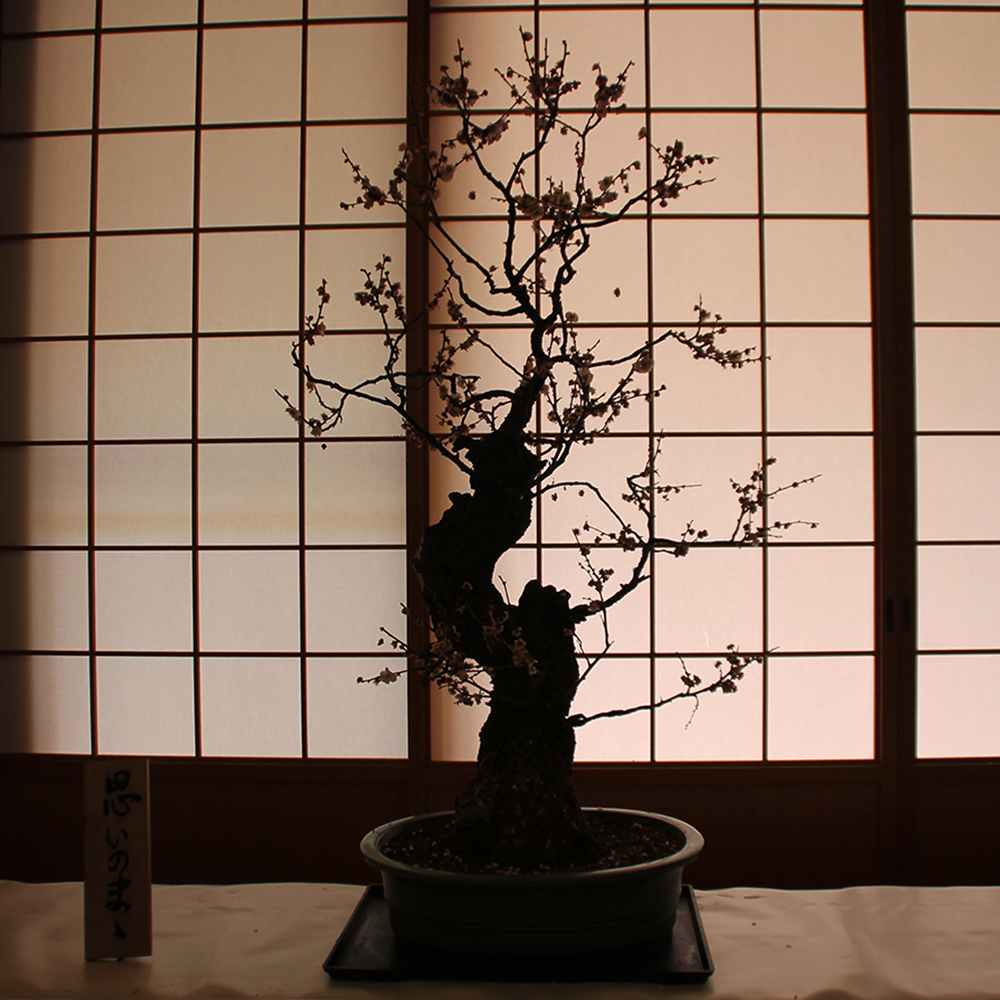
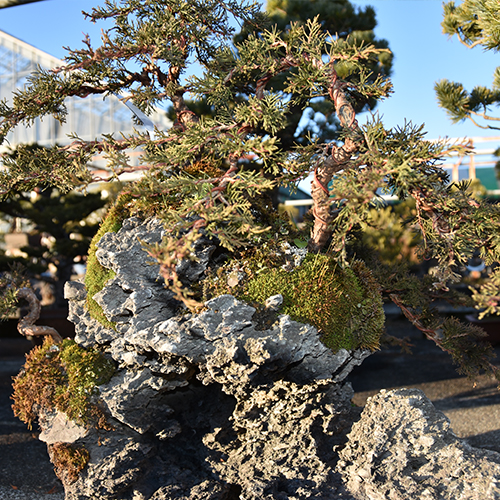
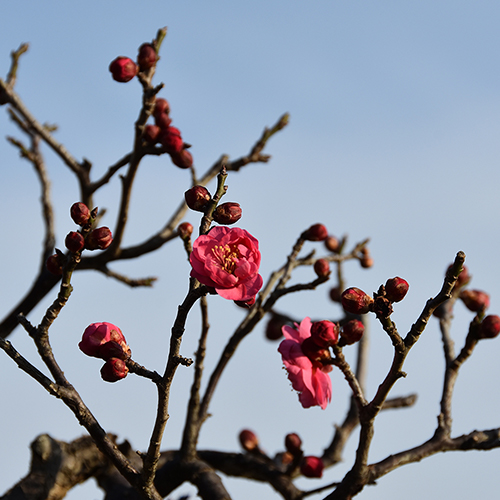
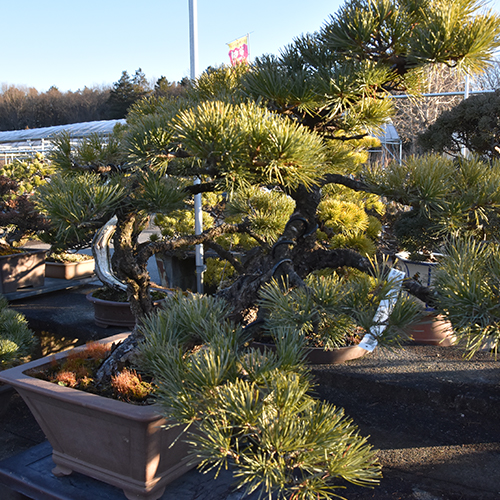

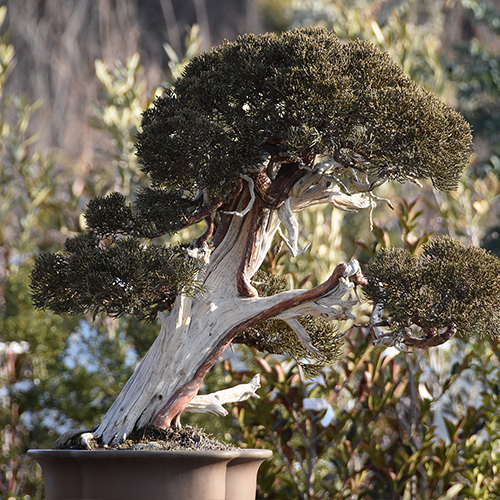
Shohaku Bonsai
Shohaku bonsai is created with a needle-leaved evergreen tree. It is no exaggeration to say it symbolizes “bonsai.” Trees like Five-Needle Pine, Juniperus chinensis, and Japanese yew maintain the same shape year-round, reminding you of the Japanese landscape. The beauty of Five-Needle Pine is its scaly bark. It is created through exposure to a harsh environment and shows the passage of time. Juniperus chinensis charms people by representing the fusion of artificial beauty and unforgiving nature that requires weathering of strong winds and deep snow. Shohaku bonsai will introduce you to the profundity of bonsai.
Zouki Bonsai
Zouki bonsai entertains you by changing its appearance each season. New sprouts announce the coming of spring. Japanese maple trees show how seasons change. Their fresh and green leaves with astonishing beauty will turn into a burst of yellow, orange, and red in autumn and fall in winter. Zelkova stands firmly on earth and grandiosely spreads out branches. How it comes back to life in the pot after its leaves have all fallen is the best part of bonsai. Zouki bonsai will introduce you to the magnificence of the seasons.
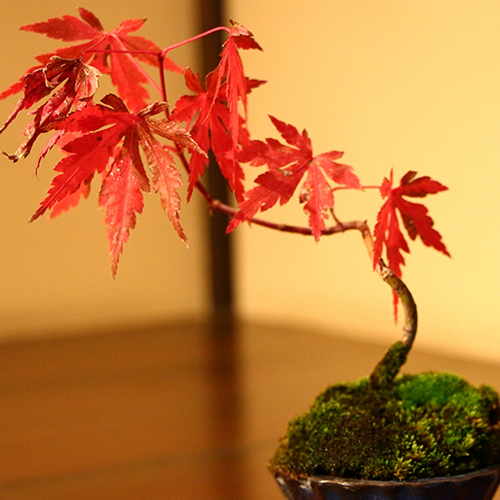
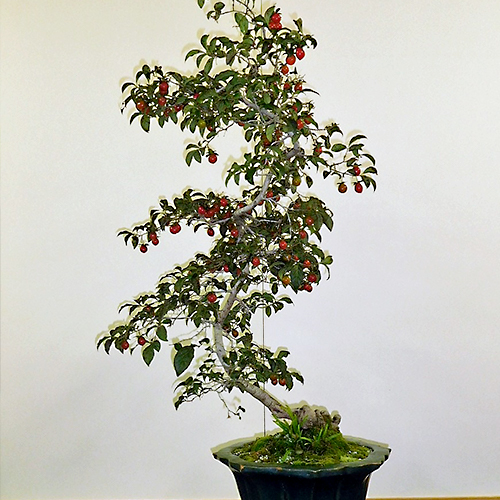
Mimono Bonsai
Mimono bonsai is a type of zouki bonsai using trees that bear fruit. Flowers bloom and produce fruit. Some fruits develop a color as they ripen. Finally, they feed birds and insects to return to nature. Chinese persimmon has brought innovation into mimono bonsai. It is popular because it has many breeds. Chinese quince bears large yellow fruit with a sweet smell. It has a very strong presence in mimono bonsai. Mimono bonsai will introduce you to the power of nature.
Hanamono Bonsai
Hanamono bonsai is a type of zouki bonsai using flowering trees. Plum, cherry, and Chaenomeles that flower in winter to spring are popular. Japanese quince flowers bloom in spring and fall. Crape myrtle flowers in summer. Satsuki bonsai is a special type of hanamono bonsai. Satsuki (dwarf azalea) varieties flower at different times throughout the year. Hanamono bonsai will create a relaxing atmosphere with beautiful flowers.
